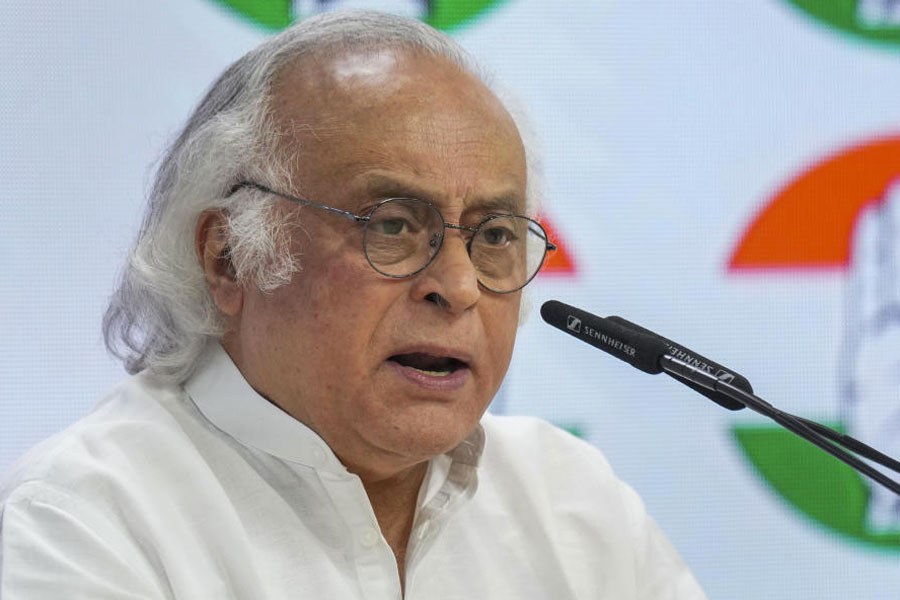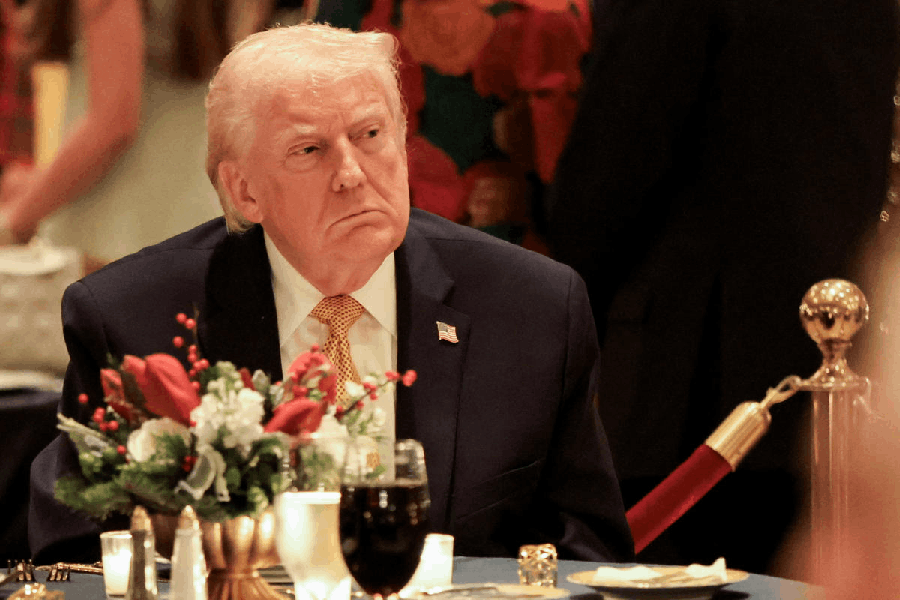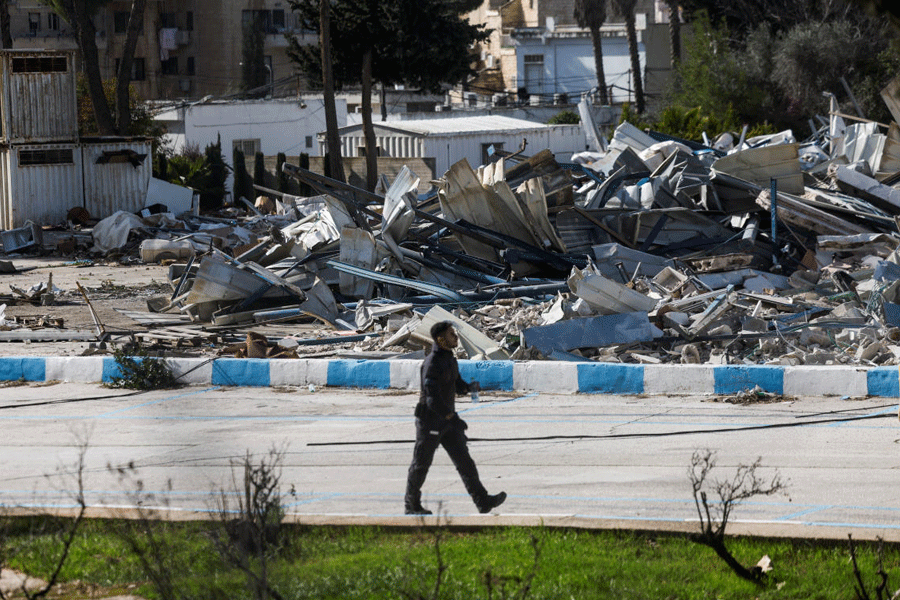 |
| Shreyasi Chatterjee at CIMA Gallery on Thursday. Picture by Sanjoy Chattopadhyaya |
In her earliest memory, Shreyasi Chatterjee remembers assisting her father — a doctor by profession and a self-trained artist by choice — on a collage. “As he zeroed in on a papercut, he asked me to run to the kitchen and get some onion skin, to be used as foliage in the work,” recalls the 49-year-old artist and teacher of art history, “That was my earliest brush with using unconventional material.”
The unconventional is what visitors would experience at Through The Eye Of A Needle, Shreyasi’s debut solo show, opening on Friday evening at CIMA Gallery.
Integrating needlework, stitches and embroidery onto the canvas, these are essentially mixed-media works where lines and forms merge into unique structural dialogues brought about by her use of needle and thread along with paint. A kantha-stitch sample is the simpler doorway to this complex world, one of the artist’s earliest works (“1988,” she confirms).
The point of focus moves from such solitary structures to a multitude of imagery and patterns — street scenes in Calcutta, traffic snarls, stock images of trains crossing a river bridge, the bylanes of Benares.
These aren’t unfamiliar images, quite the contrary. But in Shreyasi’s art, these are forms and shapes and colours and textures that break free into a veritable personal universe, shaped by whims and wit. Here, a crimson fragment of a Pochampalli sari denotes the inner landing of a double-decker bus in OK Tata; a peacock renders an entire panel of abstract cloth fragments realistic in a piece from the Gift Wrapper series; similar “wasted” bits explode in Broken Shards to mark a saucer breaking, a study in positive and negative spaces. With layer upon layer of colour and collage like fabric and appliqué, this is as expansive as it is meticulous. Either way, it shatters moulds to translate and transform the familiar in an extraordinary light. Suffice it to say, this visual language is unique and all her own.
“A piece of fabric has a relief and that brings about another dimension within an apparently two-dimensional framework. All stitches have structural possibility,” explains Shreyasi. Developing this language “has been the outcome of a journey” — from the memories of her father to being transfixed by the deft designs spun out by her mother (a “very talented needleworker”) to her days at Kala Bhavan and the training she received under KG Subramanyam. “Art history was my specialisation, along with graphics and painting. I was always interested in graphics. I found a similarity in the incisive manner in which metallic prints are made, and needles.”
It was Kala Bhavan that set off a reaction in her youth. “Most of our teachers were male, and yes, there were snide remarks about girls studying art. ‘You girls have no business being here; you will get married and embroider tablecloth’,” she recalls, “I guess those remarks made their way in and stayed.”
As the process of painting came to a stop with mounting research work at Goldsmith’s College, London, Shreyasi would “fulfil my desire to work with colours” in bits and pieces of embroidery. Those doodles soon developed into a full-blown search for an individual language, giving rise to 6x8 naturescapes requiring a painstaking process of stitching in each section.
Shreyasi’s most recent work, displayed in The Portrait Album series, aligns itself to filament-like pen-and-ink forms that bloom into abstract but final shapes, offering illusions of the very threads she uses elsewhere. Portraits are patched up, even grotesque — there’s one with a large pimple even — but the humour is always sympathetic. Paint, when applied, is played up in disparate areas, often ending up as vibrant, linear strips on canvas.
A full circle? Shreyasi smiles. Like the magic quilt of fairy tales, this is one tableau that she would rather write its own story.











